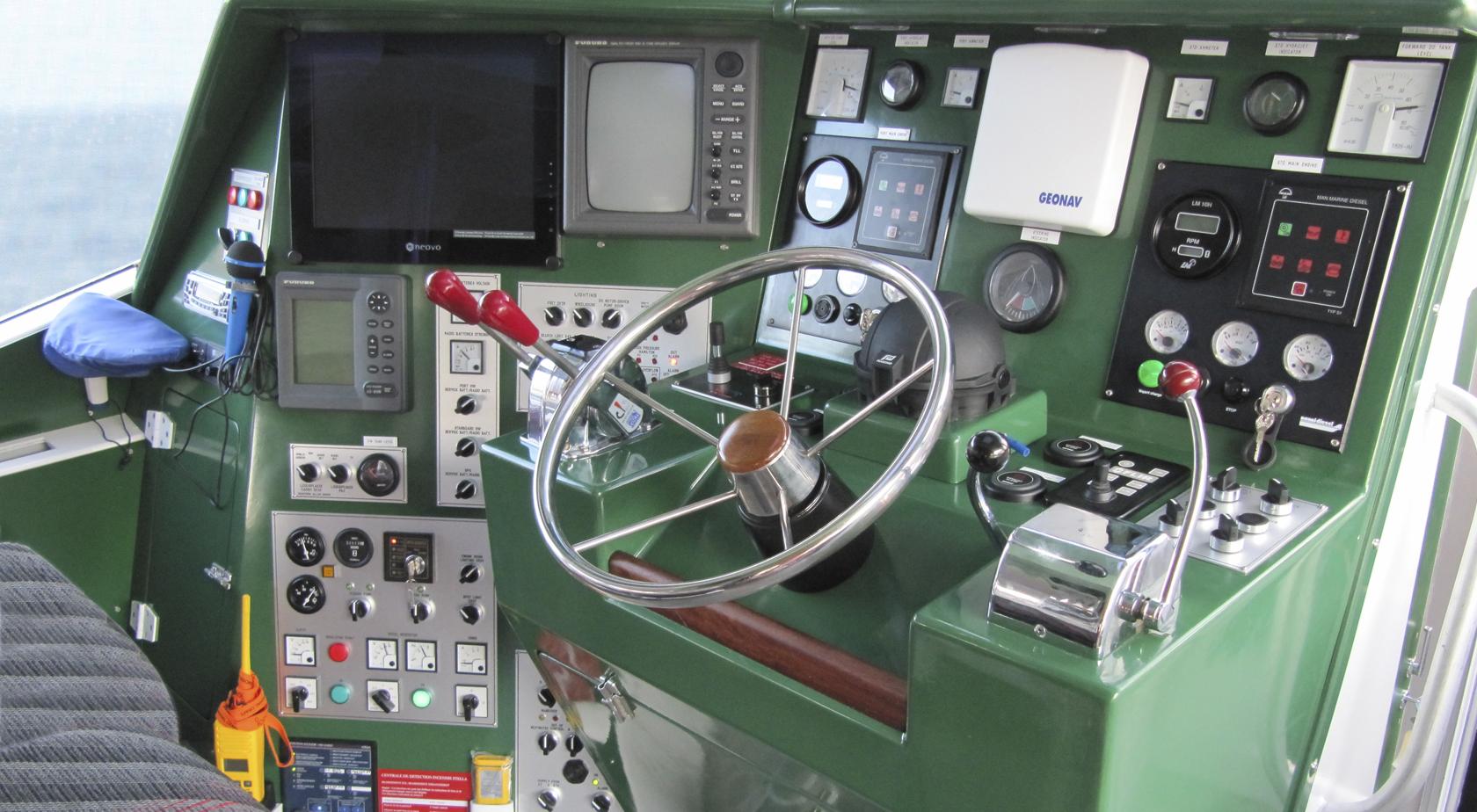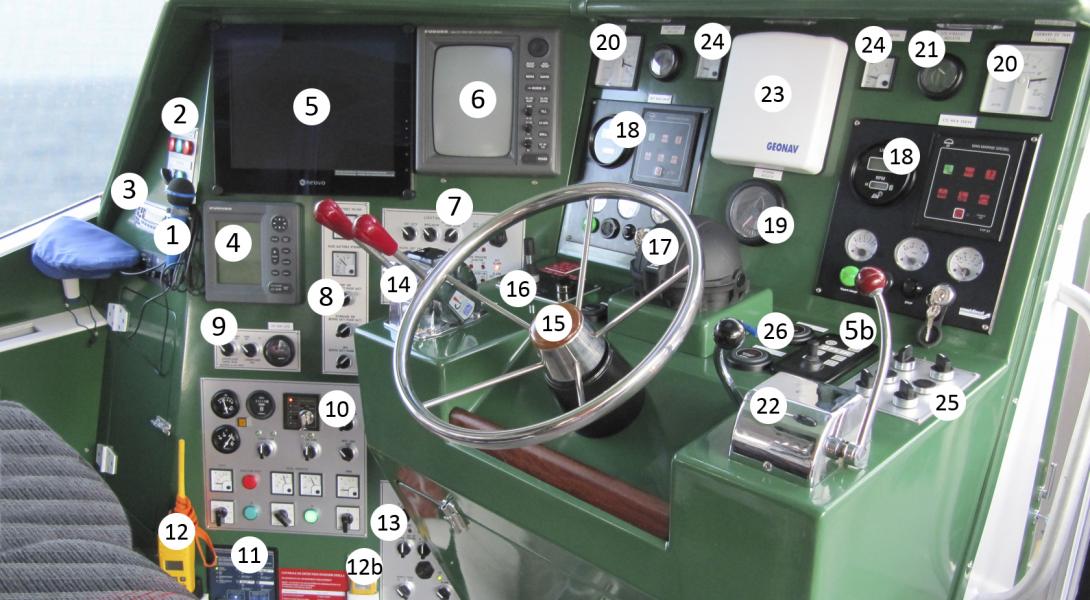
Surfer 1800: Welcome onboard!
Every year, personnel transport vessels of the BOURBON fleet ferry over 2.5 million passengers. With their ability to transport 25 people, Surfers of the 1800 Series operate around the world, especially in West Africa and Asia. Welcome onboard and discover the all details of the vessel's bridge.

After clicking on the photo, see the description of each equipment below.
1 - Public address
This microphone enables the pilot to communicate with the passengers or the seaman, to announce the vessel's arrival, to coordinate the crew when loading a parcel onboard, etc.
2 - Vessel air conditioning controls
3 - Integrated Radio
4 - Video depthfinder
This device indicates the depth and topography of the seabed. This is mandatory radio-electrical equipment imposed by the flag.
5 & 5b - Control and display of nighttime infrared camera
Used during personnel transfers taking place at night. The joystick allows the camera to be rotated at 360° and raised.
6 - Radar Screen
Enables the viewing all information at 360°, day and night: the contours of the coast, the presence of other vessels, etc. It covers a radius of 48 nautical miles around the Surfer1. This equipment is also mandatory.
7 - Control panel for the main electrical equipment
Machinery lighting/passenger facilities/foredeck, machinery fans, bilge pump control, etc.
8 - Battery control panel
Used in particular to check battery voltage.
9 - Helm power assist
Similar to the power steering of a car, it helps maneuver the vessel's helm more easily. On this type of Surfer, maneuvering is performed by orienting relatively heavy directional nozzles, therefore power assistance is essential.
10 - Generator startup and monitoring panel
Generators onboard our Surfers can generate 380V, 220V or 24V. Aboard a Surfer 1800, all navigation devices operate on 24V.
11 - Fire Detection unit
Thanks to sensors placed in all enclosed premises (diesel oil, machinery, etc.), this unit alerts the pilot in the event of a fire on board the Surfer.
12 - Mandatory handheld VHF radio (GMDSS - Global Maritime Distress and Safety System)
Intended to only be used if the vessel has to be evacuated. Used to contact any vessel or aircraft equipped with VHF.
Surfers are also equipped with a work VHF, used during operations to contact client, the platform, the crane operator, etc. (not visible in photo).
12b - Spare lithium batteries for the handheld VHF
13 - Navigation lights control panel
When navigating at night, a Surfer is illuminated with a red light to port, green to starboard, and white on the bow and stern. These 4 position lights are each supported by a backup light. This panel is used to activate all the lights fitted to the ship (anchor light, maneuverability light, etc.).
14 - Main engine gas control
15 - Helm of the vessel
16 - FiFi2 cannon control console
17 - Magnetic Compass (in closed position)
This device indicates the North. An essential tool for navigation, it is used to keep a course.
18 - Engine control panels
Containing the start button, the alarms regarding water temperature, oil pressure, alternator voltage, tachometer, etc.
19 - Rudder angle indicator
This equipment gives the position of the jets.
20 & 20b - Gauge indicating the diesel
The two engines on a Surfer can contain (2 x 1650 liter capacity).
21 - Waterjet diverter position indicators
If the needle is pointing up, the vessel can move forward if it is down, the vessel can move back.
22 - Diverter control unit
23 - Electronic map reader that operates with its own GPS
24 - Ammeters
Shows the current consumption in amperes/hour, for each of the two batteries.
25 - Controls for the windshield washer, windshield wipers, and foghorn
26 - Exhaust hose high temperature alarm
The engines of a Surfer are cooled with fresh water, itself cooled by seawater. The fresh water is channeled into the engine through a pump. If this pump breaks down, there is no longer any cooling. The sensors on the exhaust hoses will then trigger an alarm.
188 kilometers.
2Fire Fighting


